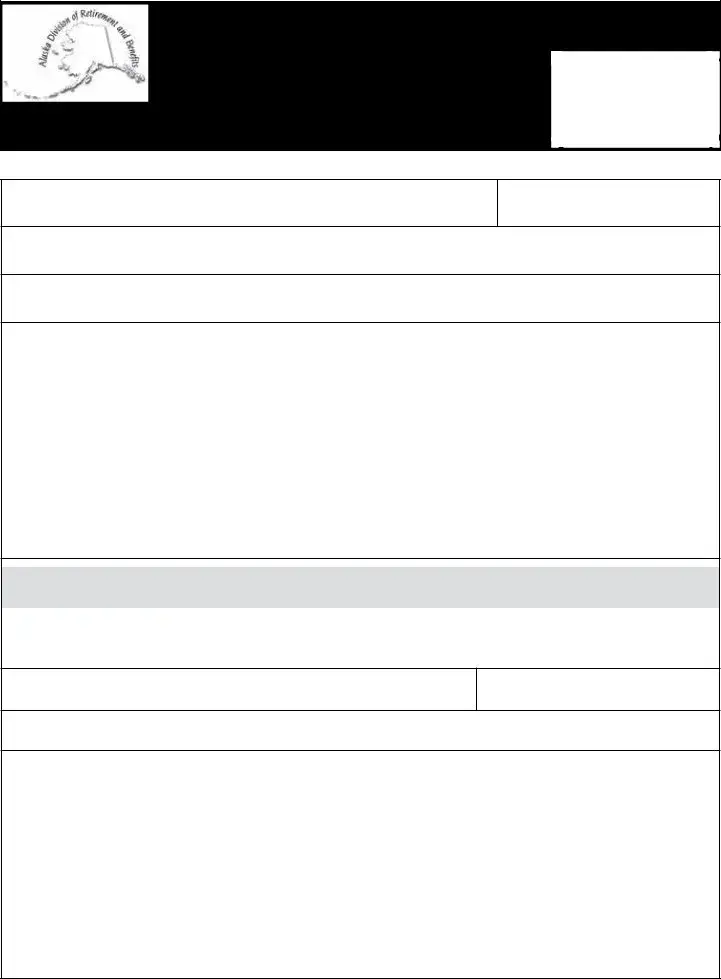What is the Alaska GEN020 form?
The Alaska GEN020 form, also known as the Cost-of-Living Allowance (COLA) Affidavit of Residency, is a document used by the Division of Retirement and Benefits. It serves to verify the residency of Alaska retirees who are applying for COLA benefits. This affidavit ensures that the applicant meets the residency requirements set by the state to qualify for these benefits.
Who needs to complete the Alaska GEN020 form?
Retirees living in Alaska who wish to apply for or continue receiving the Cost-of-Living Allowance (COLA) benefits must complete the GEN020 form. This document substantiates their physical presence and domicile in the state, aligning with the specific eligibility criteria for COLA.
What are the residency requirements for the COLA as outlined in the GEN020 form?
The GEN020 form stipulates that a person must be domiciled in Alaska, meaning they maintain their principal place of residence in the state. Eligibility hinges on the individual demonstrating an intent to return to Alaska during any absence and maintaining that they do not claim residency or receive benefits from another state or nation. Establishing and maintaining customary ties indicative of Alaska residency is critical for demonstrating intent.
How does one demonstrate intent to remain a resident of Alaska for COLA eligibility?
Demonstrating an intent to remain a resident of Alaska involves establishing and maintaining customary ties to the state. This could include possessing an Alaska driver's license, owning property or paying rent in the state, voter registration, and other behaviors that signal Alaska as the person's principal place of residence and where they intend to return after any absence.
What constitutes a false statement on the GEN020 form?
Providing inaccurate information or deliberately falsifying records on the GEN020 form in an attempt to defraud the Alaska retirement system is considered making a false statement. This is a serious offense, classified as a Class A Misdemeanor, and upon conviction, individuals may face penalties, including fines up to $500 and/or imprisonment for up to 12 months.
Who can certify the GEN020 form?
The form must be certified by an adult Alaska resident who is not related to the applicant. This person must be able to verify the applicant's residency in Alaska and attest to the applicant's intent to remain in the state. The certifier confirms the applicant's residential address, that it is their fixed, permanent home, and provides their own contact information for verification.
How is the GEN020 form certified?
Certification of the GEN020 form can be done by a representative of the Division of Retirement and Benefits, Division of Personnel Staff, or by a notary public. The certifier must witness the signature of the person applying for COLA benefits and attest to their residency and intent to remain in Alaska.
What are the penalties for making a false statement on the GEN020 form?
Making a false statement or falsifying records on the GEN020 form is a Class A Misdemeanor. Individuals found guilty of such actions are subject to a fine of not more than $500, imprisonment for not more than 12 months, or both. This demonstrates the importance of providing accurate and truthful information when completing this affidavit.
Where can I find the GEN020 form?
The GEN020 form is available through the Alaska Division of Retirement and Benefits. Individuals can access it on their official website or directly contact the Division for a copy. Additionally, some retirement planning resources and Alaska state offices may provide access to this form.
Is there assistance available for completing the GEN020 form?
Yes, assistance for completing the GEN020 form is available. Retirees can reach out to the Alaska Division of Retirement and Benefits for guidance. Additionally, legal advisors or advocates specializing in retirement and benefits may offer support in ensuring that all information is accurately and thoroughly provided.
